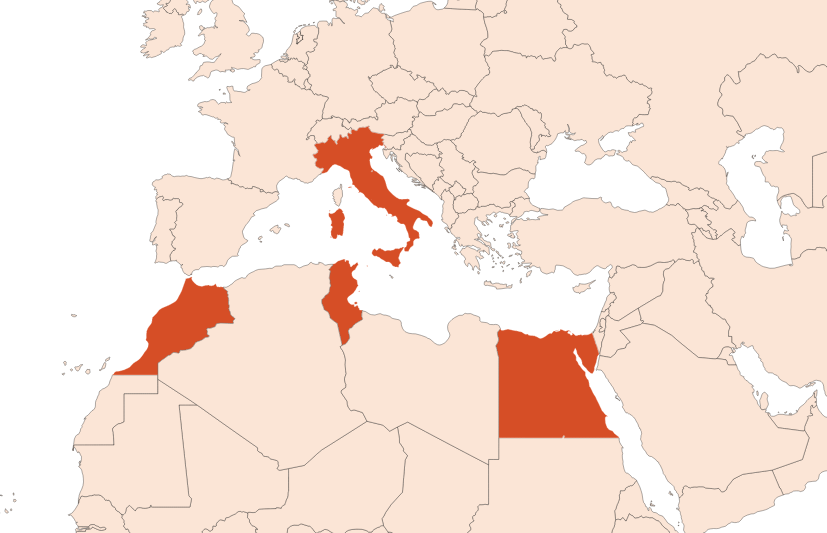Orange Blossom Absolute
Naturelle
Floral > Orange Blossom > Honeyed

Crédits photo: ScenTree SAS
Latin name :
Citrus aurantium
Botanical profile :
The orange blossom is the bitter orange tree blossom, belonging to the Rutaceae family and the Citrus genus.
Geographic origin :
Originally from South-East Asia, the bitter orange tree is now grown in Tunisia, Morocco, Italy, Egypt, Central and South America.
Chemotypes :
The genus Citrus includes the vast majority of citrus fruits and includes a large number of varieties available in perfumery:
Bergamot - (Citrus bergamia) is a hybrid of lemon and bitter orange, grown for the essential oil of its fruit and petitgrain.
Bitter orange or bigarade orange - (Citrus aurantium), grown in Spain and Florida.
Citron - (Citrus medica), grown in Italy (Sicily).
Lemon - (Citrus limon), cultured in Italy for the essential oil of its fruit and of its leafy twigs (Petitgrain).
Combava - (Citrus hystrix), grown in Thailand and India.
Lime - (Citrus aurantifolia), grown for its fruit in Mexico for the most part.
Mandarin - (Citrus reticulata), grown mainly in Italy for its fruit and for its petitgrain, by extracting the leaves from the tree. Its hybrid with sweet orange gave birth to clementine.
Orange - (Citrus sinensis) is famous for the cultivation of its fruits, whose juice and essential oil are extracted in Brazil and California in particular, which is the most used of all perfumes.
Grapefruit - (Citrus paradisii) of Malay origin, is cultivated for its essential oil in Brazil and Israel in particular.
Yuzu - (Citrus junos), produced in Japan and Korea.
Bergamot - (Citrus bergamia) is a hybrid of lemon and bitter orange, grown for the essential oil of its fruit and petitgrain.
Bitter orange or bigarade orange - (Citrus aurantium), grown in Spain and Florida.
Citron - (Citrus medica), grown in Italy (Sicily).
Lemon - (Citrus limon), cultured in Italy for the essential oil of its fruit and of its leafy twigs (Petitgrain).
Combava - (Citrus hystrix), grown in Thailand and India.
Lime - (Citrus aurantifolia), grown for its fruit in Mexico for the most part.
Mandarin - (Citrus reticulata), grown mainly in Italy for its fruit and for its petitgrain, by extracting the leaves from the tree. Its hybrid with sweet orange gave birth to clementine.
Orange - (Citrus sinensis) is famous for the cultivation of its fruits, whose juice and essential oil are extracted in Brazil and California in particular, which is the most used of all perfumes.
Grapefruit - (Citrus paradisii) of Malay origin, is cultivated for its essential oil in Brazil and Israel in particular.
Yuzu - (Citrus junos), produced in Japan and Korea.
Extraction process :
The bigaradier is a tree about 3 meters tall in adulthood and provides about 10 to 30 kg of flowers per year at maturity.
In March and April, the most mature flowers are selected and delicately picked by hand. They are stored in sacks and weighed before they are brought to the factory. The flowers must be extracted with hexane less than five hours after they are picked: in a tank, during one hour and a half. Once exhausted, the flowers are removed from the extractor (they are placed on grids to remove them easily) and orange blossom hexane is evaporated and recycled. After that, the concrete is collected. The absolute is obtained after glazing (temperature gradient from 140 °F to 32 °F) the concrete in alcohol, after which the insoluble waxes are filtrated with a Büchner funnel and the alcohol is evaporated.
The bigaradier gives many extracts. The Bitter Orange EO gives an essential oil by cold expression of the fruit. If we treat branches and twigs by hydrodistillation, we obtain Petitgrain Bigarade EO. Finally, if we use the flower, we can obtain Orange Blossom Absolute (extraction with volatile solvent) and Neroli EO (hydrodistillation).
In March and April, the most mature flowers are selected and delicately picked by hand. They are stored in sacks and weighed before they are brought to the factory. The flowers must be extracted with hexane less than five hours after they are picked: in a tank, during one hour and a half. Once exhausted, the flowers are removed from the extractor (they are placed on grids to remove them easily) and orange blossom hexane is evaporated and recycled. After that, the concrete is collected. The absolute is obtained after glazing (temperature gradient from 140 °F to 32 °F) the concrete in alcohol, after which the insoluble waxes are filtrated with a Büchner funnel and the alcohol is evaporated.
The bigaradier gives many extracts. The Bitter Orange EO gives an essential oil by cold expression of the fruit. If we treat branches and twigs by hydrodistillation, we obtain Petitgrain Bigarade EO. Finally, if we use the flower, we can obtain Orange Blossom Absolute (extraction with volatile solvent) and Neroli EO (hydrodistillation).
Major Components :
Linalool (30-35%)
Farnesol (≈8%)
Linalyl Acetate (≈7%)
Nerolidyl Acetate (≈6%)
Indol (≈2%)
Methyl Anthranilate (≈2%)
Farnesol (≈8%)
Linalyl Acetate (≈7%)
Nerolidyl Acetate (≈6%)
Indol (≈2%)
Methyl Anthranilate (≈2%)
- Uses in perfumery :
- Useful for white flower notes: jasmine, tuberose, honeysuckle.
- Other comments :
- Tunisia is the world leading producer of orange blossom, as the cultivation of bitter orange or bigaradier requires a sunny weather. The importation of this tree in the Maghreb countries dates from the Arab conquests of the 9th and 10th centuries.
Citrus currently suffer from a disease called ''citrus greening ''. This disease is deadly for citrus fruits and no treatment exists. It is transmitted by a vector insect that attacks young shoots: the psylla. This results in the premature death of many trees and therefore the decline in the general production of the essential oil and its quality (reduction of the Limonene level). - Volatility :
- Heart/Base
- Appearance :
- Yellow to orange liquid
- Stability :
- Solubility issues in perfumes
The terpenes identified in this raw material can polymerize when they are oxidized
Aromatic compounds can be chromophoric and cause a coloration of the oil, especially in alkaline bases
Methyl Anthranilate can react especially with aldehydes to give colourful compounds - Price Range :
- €€€€€
- Aromatherapy :
Informations provided below are taken from reference works in aromatherapy. They are given for information purposes only and can not constitute medical information, nor engage the responsibility of ScenTree.
The orange blossom absolute is renowned for its antidepressant, neurotonic, digestive, phlebotonic (tones the circulation of blood in the veins), antiparasitic and is recommended in case of hepatopancreatic insufficiency, bronchitis, depression, hypertension and childbirth (tones).

Crédits photo: ScenTree SAS
- EINECS number :
- 277-143-2
- FEMA number :
- 2818
- Allergens :
- Linalool - D-Limonene
- IFRA :
- This ingredient is restricted by IFRA
- Annexe I :
- Some regulated synthetic ingredients are found in nature and in certain proportions in natural ingredients. This presence in nature has to be taken into account when calculating limits of use recommended by the IFRA. In case you do not know these concentrations, you can use the ones estimated by the IFRA. Here they are :
- Annexe I :
- Some regulated synthetic ingredients are found in nature and in certain proportions in natural ingredients. This presence in nature has to be taken into account when calculating limits of use recommended by the IFRA. In case you do not know these concentrations, you can use the ones estimated by the IFRA. Here they are :
| List of regulated compounds contained in this ingredient | ||
|---|---|---|
| Regulated ingredient name | CAS N° | Estimated Concentration |
| Geraniol | 106-24-1 | 1 |
| Farnesol | 4602-84-0 | 8 |
| List of regulated compounds contained in this ingredient | ||
|---|---|---|
| Regulated ingredient name | CAS N° | Estimated Concentration |
| Geraniol | 106-24-1 | 1 |
| Farnesol | 4602-84-0 | 8 |
To learn more about IFRA's standards : https://ifrafragrance.org/safe-use/library
ScenTree is solely responsible for the information provided here.



